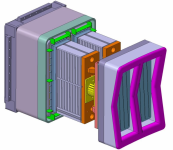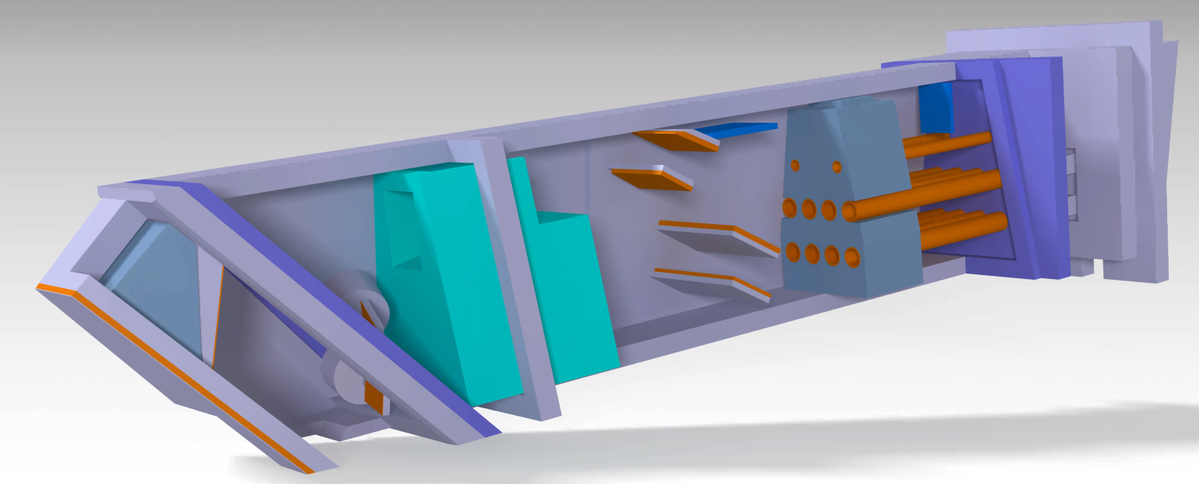Nuclear Design Analyses
Overview
The main activities in the area of nuclear design analyses are devoted to studies on the development of fusion demonstration reactors and power plants, and specific neutronics tasks for the International Thermonuclear Experimental Reactor (ITER). The focus of these activities is on the design optimization of reactor components such as the blanket, the shield, the divertor, plasma heating and diagnostic systems.
An important step in the Monte Carlo approach of neutronic design calculations is the generation of three-dimensional geometry models from CAD data by making use of the geometry conversion tool McCad developed by our group.
PPCS Reactor Study
...
Blankets for Demonstration Reactors
....
Test Blanket Module for ITER
....
ECH Launcher for ITER
The electron cyclotron-heating upper launcher (ECHUL) will be installed in four upper ports of the ITER tokamak thermonuclear fusion reactor. Each ECHUL is able to deposit 8 MW power into the plasma for plasma mode stabilization via microwave beam lines. This project supports the development of the launcher for the final design with neutronic analyses. These analyses include for example radiation damage studies to confirm the performance and durability of the launcher during operation. Another important aspect of the project is the optimisation of the shielding by the launcher in order to allow workers to perform maintenance during reactor shut down.
More details are available in publications:
Shut-down dose rate analyses for the ITER ECHUL ...
Radiation level analysis for the port cell of the ITER ECHUL ...
HELIAS
HELIAS is a stellarator power reactor, which is the straightforward development of the Wendelstein 7-X. The HELIAS project is processed in cooperation with the Max Planck Institute for Plasma Physics. In this project, the first aim is to develop a suitable neutron source model based on plasma physics data and the second aim is to develop a suitable approach for the design analyses and neutronics calculations.


